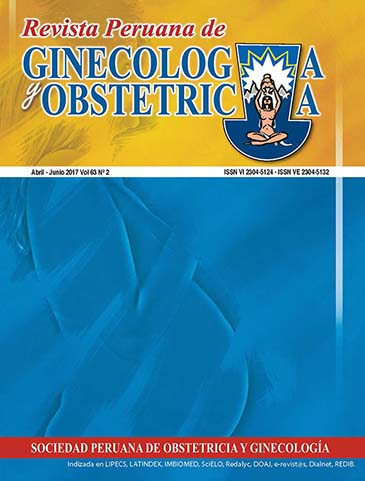Anastomosis placentarias intergemelares que no cruzan la membrana divisoria: fotocoagulación láser de vasos comunicantes en el síndrome de transfusión intergemelar.
DOI:
https://doi.org/10.31403/rpgo.v63i1993Resumen
El síndrome de transfusión intergemelar (STIG) resulta de un intercambio desbalanceado de sangre a través de anastomosis vasculares entre las circulaciones de ambos fetos en embarazos monocoriales. La fotocoagulación láser de vasos comunicantes se ha utilizado para detener el desarrollo del síndrome. Algunos autores han propuesto que los vasos que cruzan la membrana divisoria son ‘sospechosos’ de participar en el desarrollo del síndrome y que la fotocoagulación láser de estos es capaz de revertirlo. Presentamos dos casos de STIG tratados exitosamente con fotocoagulación láser de anastomosis intergemelares, en los cuales los vasos comunicantes no cruzaban la membrana divisoria.Descargas
Los datos de descargas todavía no están disponibles.
Descargas
Publicado
2017-07-12
Cómo citar
Gil Guevara, E., Díaz, R., Sosa, C., & Bermúdez, C. (2017). Anastomosis placentarias intergemelares que no cruzan la membrana divisoria: fotocoagulación láser de vasos comunicantes en el síndrome de transfusión intergemelar. Revista Peruana De Ginecología Y Obstetricia, 63(2), 247–252. https://doi.org/10.31403/rpgo.v63i1993
Número
Sección
Casos Clínicos
















